Perfect Basmati Rice in a Rice Cooker (White and Brown)
Perfect Basmati rice made in a rice cooker! Make basmati rice in the Indian and Pakistani style without the soaking, monitoring, or temperature adjustments. This recipe shares the perfect ratios for fluffy, moist, separated basmati rice kernels that’ll get compliments every time!

Want to save this post?
Enter your email below and get it sent straight to your inbox. Plus, get recipes & tips every week!
“I’ve been making basmati rice in my rice cooker for years and this is the first time it’s ever come out perfect. Literally every grain.”
Julia
I’m a little hesitant to share this ‘non-recipe’, but in my defense, this is less a recipe and more a call for everyone reading this to invest in a rice cooker.
Here’s the thing – We can all make wonderful basmati rice without a rice cooker, but the idea is to do so consistently with no thought or effort on our part.
Indian and Pakistani cuisine is full of delicious rice dishes such as biryani and pulao. Considering how frequently South Asians consume rice, I think rice cookers are a necessity. And I’ll show you how to use them to make the perfect basmati rice, every time.
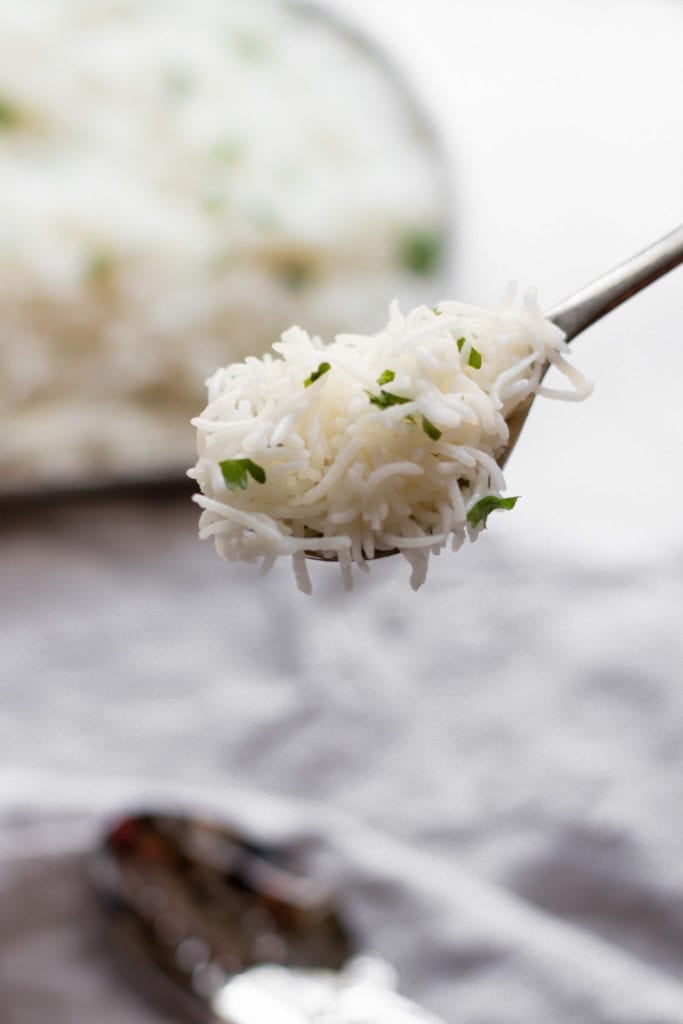
The 3 Mistakes that Result in ‘Okay’ Rice:
- Not adding enough water. Aged, long grain basmati rice needs more liquid than other types of basmati rice. You want it to be firm, each kernel separate, but soft enough to break easily between your fingers.
- Not adding salt. Not adding salt to rice is the equivalent of not adding salt while boiling pasta.
- Not adding fat. Adding just a tad bit of oil (any kind) or butter will enhance the rice and give it a moist finish, making it the perfect canvas for curries.
Ingredients for Basmati Rice in a Rice Cooker
Here’s what you’ll need.
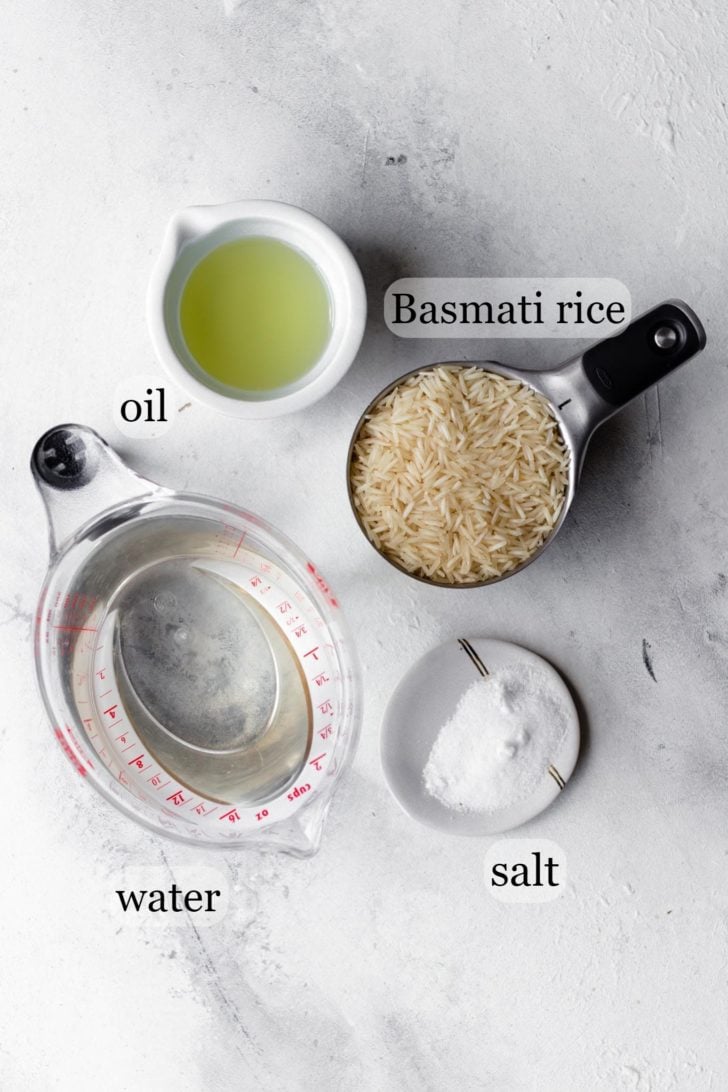
- Basmati rice, preferably aged and long grain.
- Water.
- Oil. Optional, but lovely. You can use olive oil or a more neutral-tasting oil, but you can hardly tell the difference.
- Salt.
What Is the Basmati Rice To Water Ratio In A Rice Cooker?
This depends on the type of rice you have, particularly if it’s aged or newly harvested. If you use aged, long grain basmati rice made in India or Pakistan, you’ll need 2 cups of water per 1 cup of rice. If you’re using American-made or ‘newer’ basmati rice, try reducing the amount of water to 1 3/4 cups.
How to Make Basmati Rice in a Rice cooker
Do you Have to Rinse Basmati Rice when Making it in a Rice Cooker?
The dreaded answer – it depends. You don’t absolutely have to, but it is a good idea in most cases. Excess starch in rice causes cooked rice to clump together which is not what you want with basmati rice.
- If you’re using newer basmati rice found in American supermarkets (shorter grain, more white), then you can do without rinsing.
- But aged, long-grain basmati rice (longer grain, more ivory-colored) is sometimes excessively starchy. Ideally, you should rinse it. (That said, when in a hurry, I’ve made 1 cup of rice plenty of times without rinsing and no one has complained.)
- Rinsing is especially important if you’re making multiple cups of rice because the starch can really add up.
Tip for rinsing: When you rinse, make sure to drain the excess water out well so you don’t end up with mushy rice because of too much water.
The Steps:
- Add the rice, water, oil, and salt to the rice cooker and stir to combine.
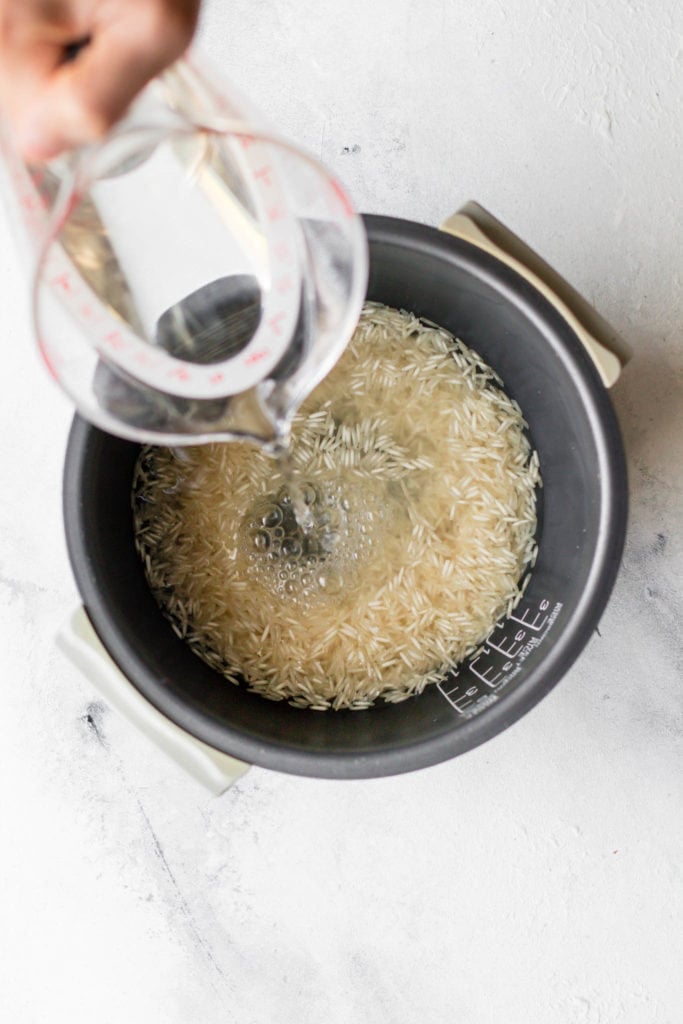
- Choose Normal (Regular/Sushi) Rice setting.
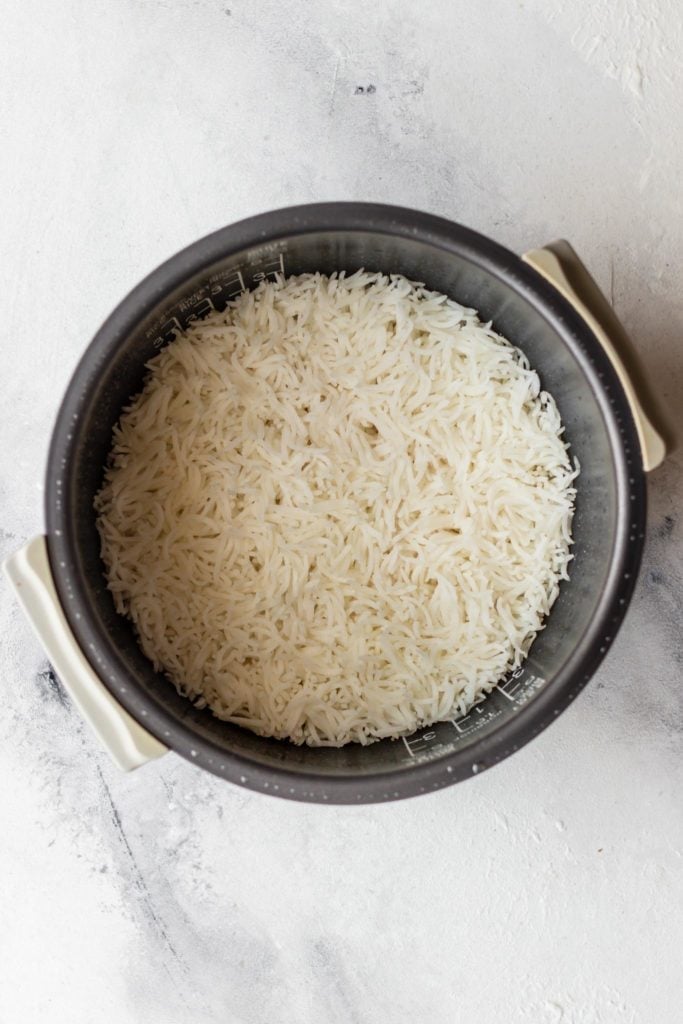
- Once finished cooking, fluff with a rice spatula/paddle and remove promptly to prevent the rice from getting mushy toward the bottom of the cooker.
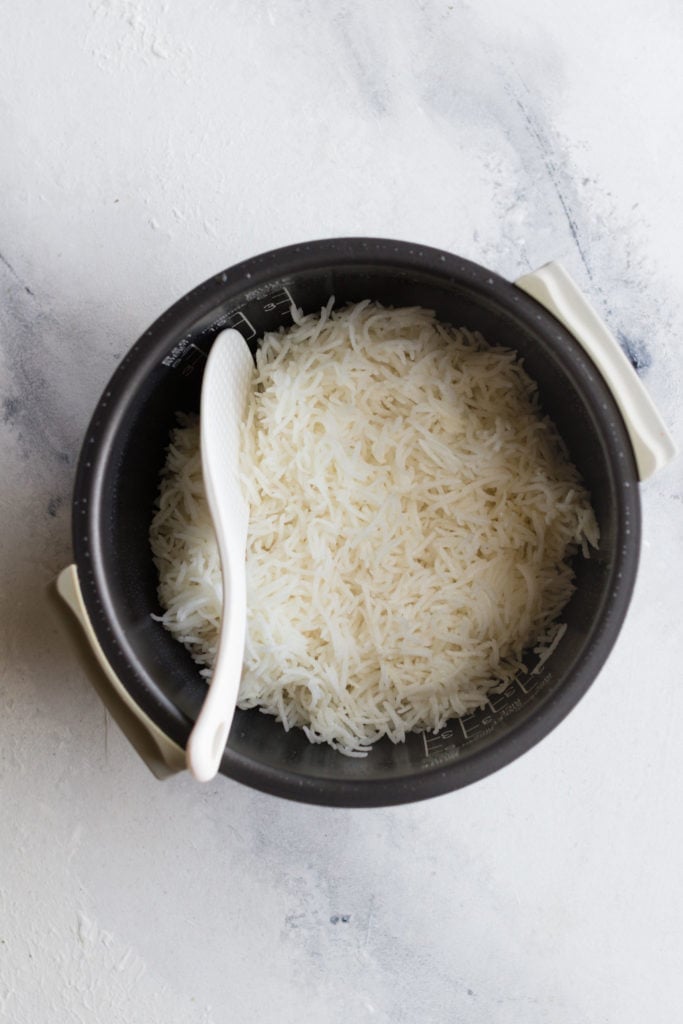
How To Cook Brown Basmati Rice In A Rice Cooker
If you’re using Indian or Pakistani grown brown basmati rice, increase the water ratio to 1 cup rice to 2 1/2 cups water.
If you’re using new, American-grown brown basmati rice, stick to 1 cup rice to 2 cups water.
How To Make Flavored Rice In A Rice Cooker
You can easily use this ratio and ingredients for variation:
- Add a handful of frozen peas and cumin seeds to make a quick Matar Pulao.
- Use this Chana Pulao (chickpea pilaf) or Chicken Pulao recipe to make the base in a sauté pan and transfer to the rice cooker.
- Use leftover curry or meat and enhance it with spices to make a fresh new pilaf with minimal effort.
Tips for making basmati rice in the rice cooker
- The rice at the bottom of the rice cooker naturally tends to be stickier, while the rice on the top is more dry. To prevent this, fluff with a rice paddle or spatula after cooking. If you cook a large quantity of rice and leave it in the rice cooker too long, it’ll stick together and form clumps.
- The cooking time will increase depending on the quantity of rice.
- To keep the rice from losing moisture or drying out, keep it covered after cooking.
- Use a quality brand of basmati rice. I suggest purchasing it at Indian or Pakistani grocery stores as it’s generally aged and more affordable there. I use Royal Chef’s Secret Extra Long Grain.
What brand rice cooker is best for basmati rice?
I love the Zojirushi brand. I have the Neuro-fuzzy and was recently sent the Micom NS-WTC10 (thanks, Zojirushi!). I found the Neuro-fuzzy to work a bit better than the Micom.
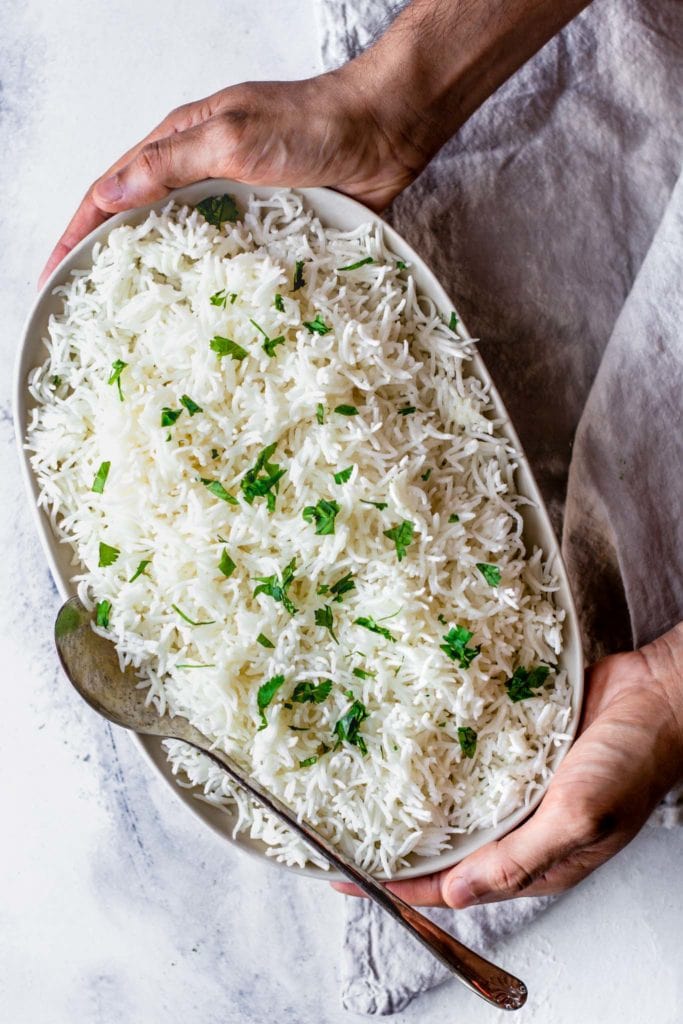
How to Store & Reheat Basmati Rice
- To store basmati rice, place in an airtight container in the refrigerator. You can also freeze it by laying it flat in an airtight plastic bag.
- To reheat, wet a paper towel, squeeze out the excess water, and lay atop the rice before microwaving. You can also sprinkle a bit of water on top of the rice and microwave until heated through.
Serving Suggestions
Basmati rice goes perfectly with almost all curries such as Dals, Masala-based curries like Chana Masala or a Chicken Curry, kebabs, and just about every main dish on this website. It is also great alongside fusion dishes like Spicy Cashew Chicken and Chicken Shashlik.
Need more ideas? Check out this roundup of 30+ Easy & Authentic Dinner Recipes to get inspired!
Tried this recipe? If you have a minute, please consider leaving a comment telling me how it was! If you have a photo of your dish, please feel free to upload it and share with others. If you’re on Instagram, please tag me so I can see your creations. I truly love hearing from you. Thank you!
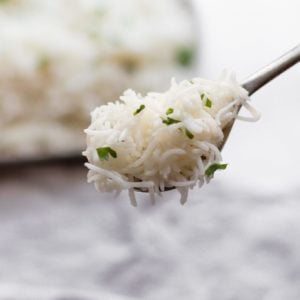
Perfect Basmati Rice in the Rice Cooker
Watch the Video
Ingredients
- 1 cup (185 g) aged, long grain basmati rice, brown or white
- 1 3/4 – 2 cups water* (See Note 1)
- 1 tbsp oil, any kind
- 3/4-1 tsp kosher salt, or to taste
Instructions
- Optional but recommended – Gently wash the rice to remove excess starch until the water runs mostly clear. Use a colander to drain well.
- Add the rice, water, oil, and salt to the rice cooker and stir to combine.
- Choose Normal (Regular/Sushi) Rice setting. For Brown rice, select Brown Rice Setting.
- Once finished cooking, fluff with a rice spatula/paddle and remove promptly to prevent the rice from getting mushy toward the bottom of the cooker. To keep the rice from losing moisture or drying out, keep it covered after cooking.


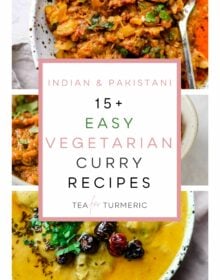
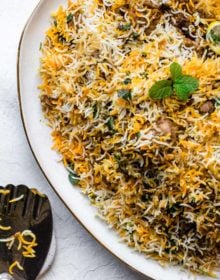
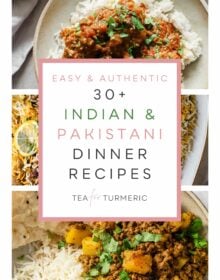

72 Comments on “Perfect Basmati Rice in a Rice Cooker (White and Brown)”
This may work in an expensive rice cooker such as the author has, but it is a disaster in a typical one. First batch was gummy and too salty. I got it right using 1.5:1 ratio of water:rice with a scant half tsp salt. I also had to STOP the cooker as soon as I could no longer see watery bubbles (short of the usual cooking cycle). I have made tons of rice: basmati, jasmine, long grain over the years. Going forward, I will continue to use the authentic, traditional way of making basmati, which has never failed me.
Sorry to hear that, Janet. I think it may be due to the type of rice. Mine is Chef’s Secret aged, long-grain and typically takes more water than other types of basmati rice. Good to know for others who may have different rice cookers.
Nope. I used aged ROYAL brand. I’m a very experienced cook. I was in a situation where I didn’t have access to a stove top so resorted to an inexpensive rice cooker that I use for quick meals. I DID get the basmati right the second go around but only after discarding the oil, cutting the water back to 1.5 cups: 1 cup rice, and cutting the salt back to a scant 1/2 tsp, and stopping the cooking process when I no longer saw water bubbles percolating up (well before the automatic cooking cycle was over). Perhaps you can get the right result with your high quality rice cooker but this recipe doesn’t apply to ALL rice cookers.
Very nice 👍
Tried this with Royal Authentic Basmati Rice (aged) and with the exact same rice cooker, but it gives very soft and mushy rice. I will try again with less water, but it was basically inedible with the recipe given.
Uh oh! Sorry to hear that, Jonathan. I do use the Chef’s Secret version, which may be why mine hold up better. Definitely try using less water for the one you’re using.
This is a perfect recipe – and I mean perfect! I am a very experienced cook & grew up making pilaf with my Armenian Mom (in America). I love cooking and have taken many classes and food tours, including one to Rajasthan where we had amazing food and learned from incredible cooks. But this is truly the best basmati rice I’ve ever made in a rice cooker – it helps to have delicious aged basmati rice of course, but I’ve used that ingredient before and this is the best preparation I’ve ever made. Thank you and I look forward to trying more of your recipes!
Now that’s a compliment! I’m fascinated by your experiences and delighted you approve! Thank you for sharing, Rachel.
Nice recipes to try. I will.
Thank you, Izzah. Basmati perfection! I happened to have your preferred brand of aged rice, and following your guidance my Zoriyushi produced the perfect long grains I’ve been trying for. I did serve it with a nice shrimp etoufee, a delightful fusion. Now there’s a clamour for me to take a run at biryani.
That sounds like a wonderful meal! I’m sure you’ll make an amazing biryani too! If you want to use the rice cooker for biryani, just remove the rice right when (or just before) the countdown to finish timer starts. Also, use less water because you’ll be introducing more water during the steaming phase.
I’ve been making basmati rice in my rice cooker for years and this is the first time it’s ever come out perfect. Literally every grain. Thank u!
SO glad to hear that, Julia! Thanks very much for sharing!
This worked out really well in Cuckoo rice cooker. Thanks for the recipe and advice!
Wonderful! Thanks for sharing, Greg!
I haven’t had great experiences making rice on a stove top – it was always either too mushy or burned at the bottom or not cooked through. After getting a rice cooker I realized the type of rice I use also makes a big difference. This recipe turned out great using basmati rice. Will definitely be making again especially during Ramadan.
Thanks so much, Sofia! I’m happy you tried it. Rice cookers are definitely the easiest way to make rice!
The recipe was great ! If want to start with 3 cups of aged rice how much water do I use ? The same ratio 6 cups or less for more rice ?
Thanks, Richard! Yes, same ratio, but be sure to remove promptly on to a platter because the larger quantity has a tendency to bunch together if left too long.